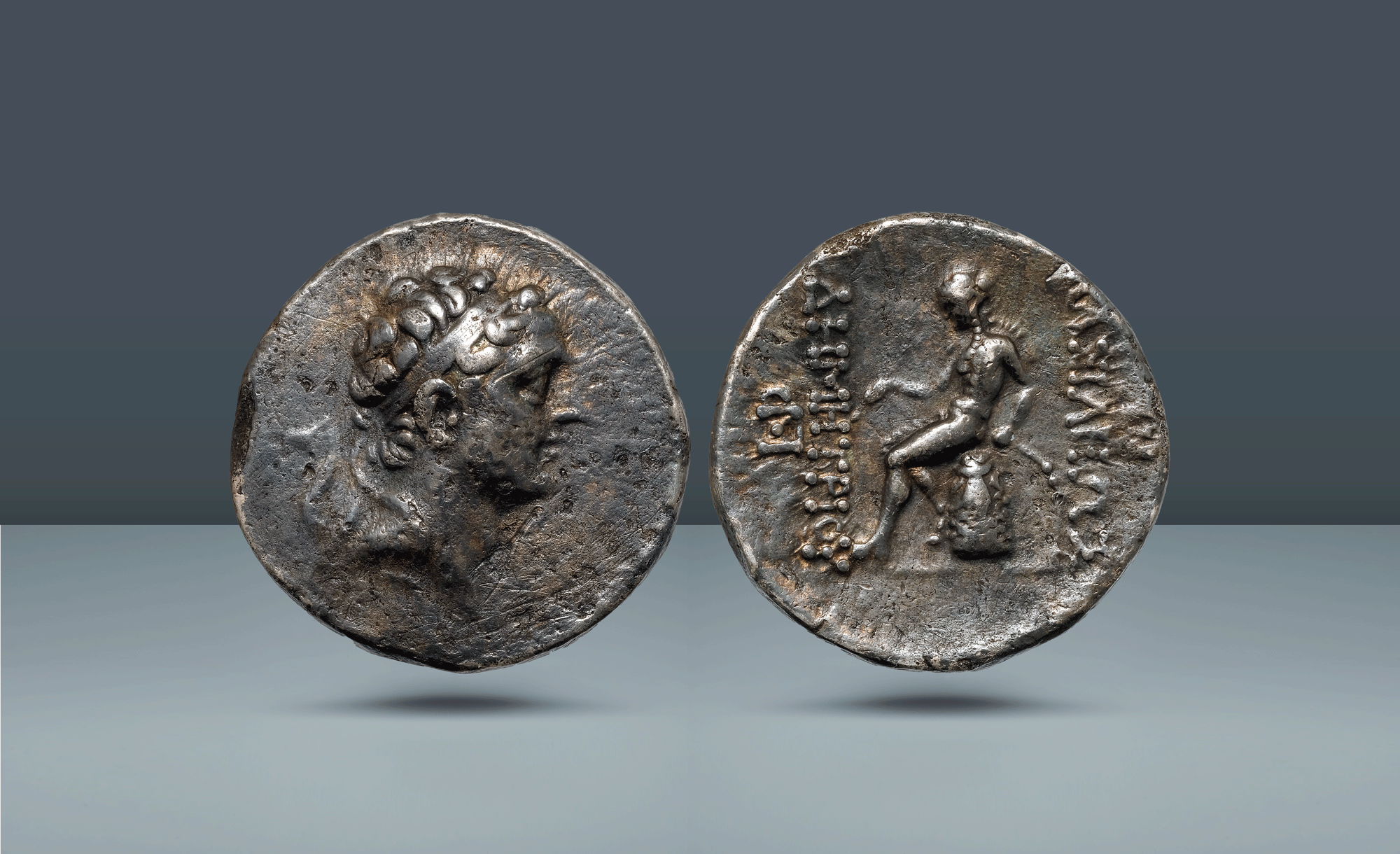Seleucid Empire, Persia. Demetrius I, Soter, 162-150 BC Uncertain Southeastern mint, c. 161-150 BC
Seleucid Empire, Persia. Demetrius I, Soter, 162-150 BC Uncertain Southeastern mint, c. 161-150 BC
AR Tetradrachm, 16.36g (28mm, 1h).
Diademed head of Demetrius I r / [B]AΣΙΛΕΩΣ – ΔHMHTPIOY Apollo seated l. on omphalos, testing arrow in r. hand and resting l. arm on grounded bow; in outer fields, monograms
Pedigree: From the Medicus Collection
References: SNG Spaer –. CSE 1092 = Mørkholm, Seleucid, p. 34, dies A1/P1 = Mørkholm, A Greek Coin Hoard from Susian, Acta Archaeologica 36, pl. III, C (these dies). SC 1717.
Grade: Extremely rare with only a few specimens known. VF
gk1987
Scroll down for more information about this coin.
The son of Seleucus IV, Demetrius I found himself in an extremely unenviable position quite early in life. As part of his father’s defeat at the hands of Rome, and enforced by the Treaty of Apamaea of 188 BC, he was sent to Rome as a political hostage. Extremely young when sent to Rome, Demetrius would spend the formative years of his life in captivity until his escape at 25 years old in 162 BC. It is therefore not too surprising that Demetrius would fall victim to what we now refer to as Stockholm Syndrome. So extensive was his indoctrination, that as Polybius asserts Demetrius considered Roman senators to be his fathers and their children as his siblings! He even went so far as to present a golden wreath to Rome. However, the Senates’ support of Demetrius’ cousin, 9-year-old Antiochus V Eupator, for the Seleucid throne prompted his escape and return to Syria.

